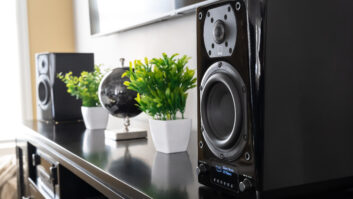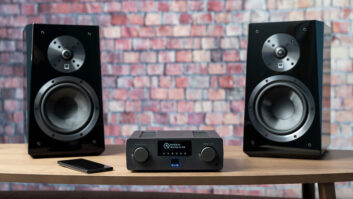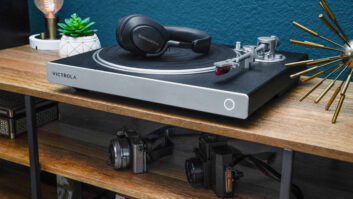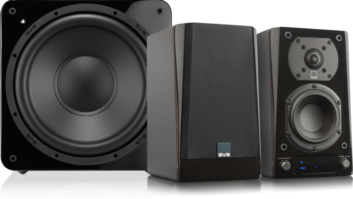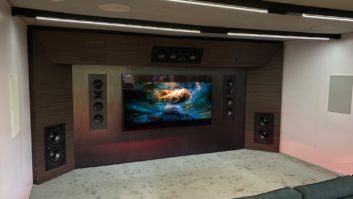Kudos: Airy, detailed sound; easily recall favorite music with presets; quality look and construction
Concerns: WiFi reception could be an issue; a tad bass shy without a sub
In my previous review of the Yamaha QS5400 Quad Streamer, I mentioned how several other companies are taking on the Sonos wireless music juggernaut, giving both integrators and customers multiple options to choose from. Besides the Yamaha MusicCast technology featured in that review, there is HEOS from the D&M group, Bluesound from Lenbrook International, and Google’s Chromecast. This month’s review focuses on another of the major players in this arena: Play-Fi.
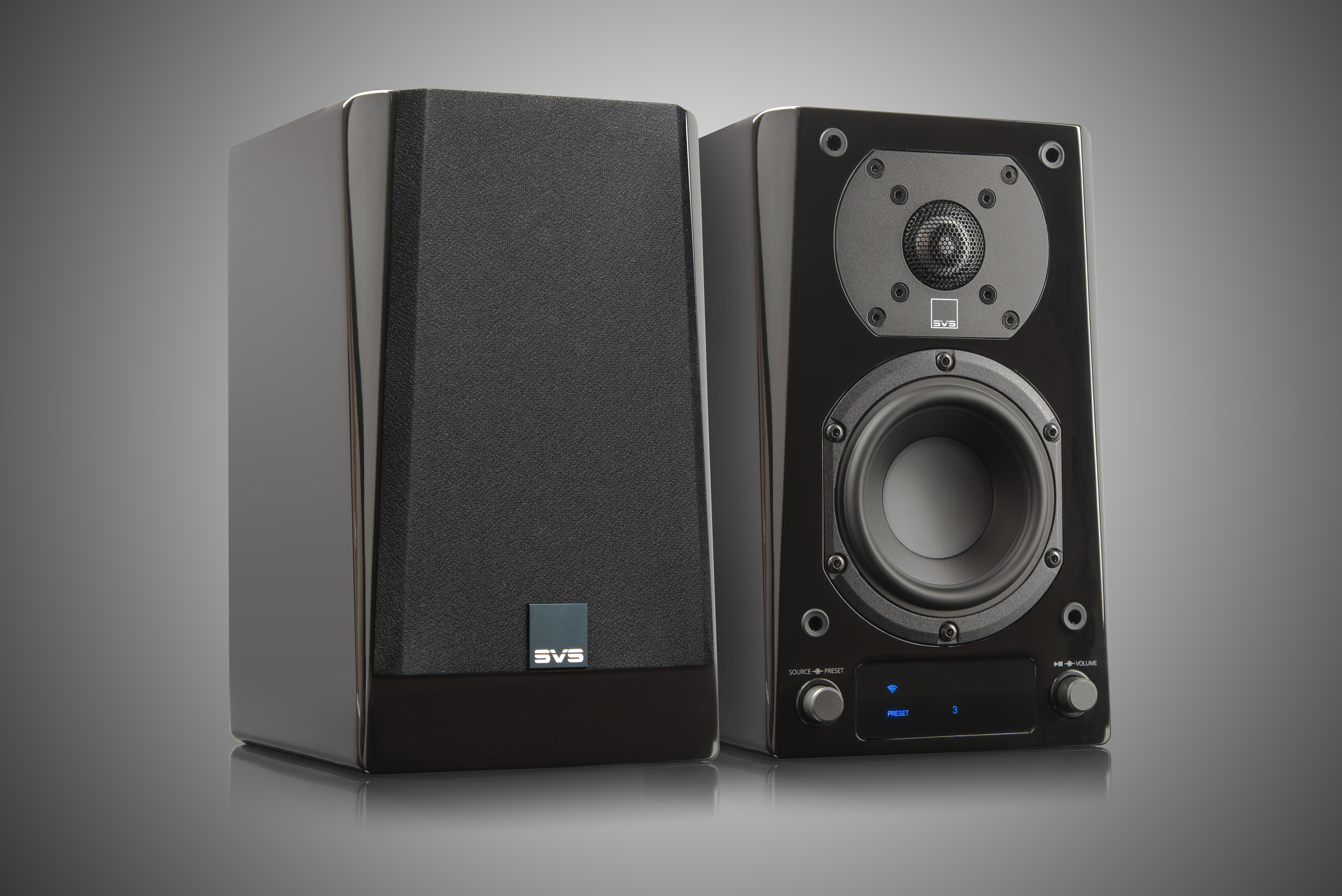
Play-Fi was originally developed by a company named Phorus by a former technology executive at Harman International in 2010. Phorus was then acquired by DTS (yes, the digital surround people) in 2012, who was then acquired by Xperi in 2016. The good news behind this shuffling ownership is that, while the Play-Fi technology had a bit of a rocky start (more on that later…), engineering resources now seem to be plentiful, and it has seen continued and steady improvements over its lifespan.
Where other wireless audio technologies (Chromecast aside) are proprietary and locked down to using a specified brand of components, and are in no way compatible, Play-Fi is more like an open sandbox, as the technology can be licensed by any manufacturer. Further, all Play-Fi-enabled products are able to work together in a system, allowing users to purchase the speaker brand(s) they prefer and tailor the performance needs by area. Some current Play-Fi partners include Anthem, Arcam, Definitive Technology, Dish, Integra, Klipsch, MartinLogan, McIntosh, Paradigm, Pioneer, and Rotel. To this list we now add SVS, who joins the Play-Fi family with its Prime Wireless series.
Since its founding in 1998, SVS has carved out a reputation as a manufacturer of high-performance/high-value subwoofers and speakers, with SVS models frequently compared to other systems costing significantly more. Initially sold direct to consumers, SVS now has dealer relationships — including affiliation with the ProSource buying group — and is a serious player in the home theater market with an avid fanbase.
The Prime Wireless series features the SoundBase, which is designed to power and bring Play-Fi wireless streaming to any pair of passive loudspeakers, and the Prime Wireless speakers reviewed here. The Prime Wireless speakers can be purchased either as a single speaker for $450, or a stereo pair for $600. When sound quality is important — which hopefully includes all of our customers — the stereo pair is the way to go, and that is what SVS sent for review.
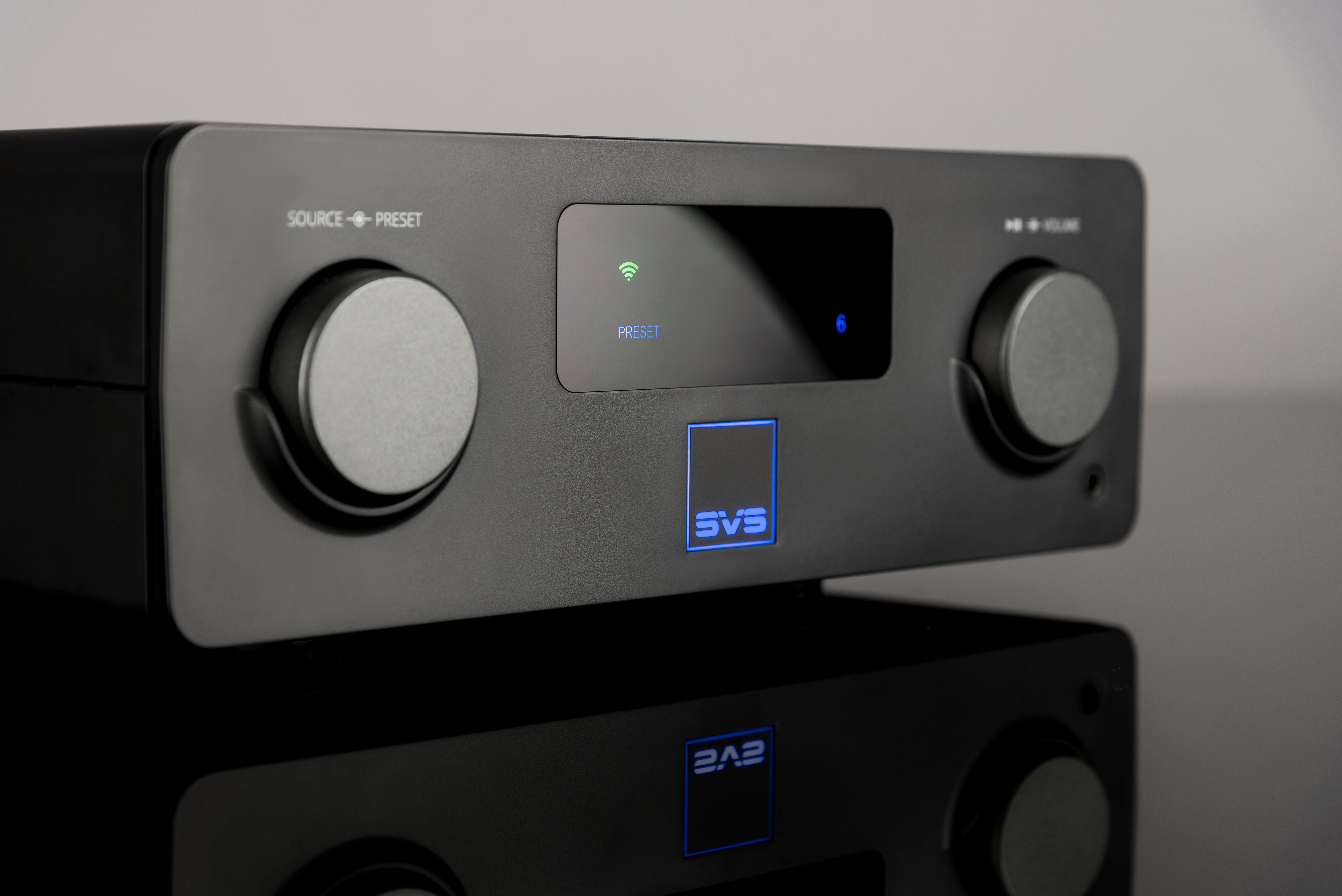
According to SVS’s president, Gary Yacoubian, “The sound quality that we’re bringing with Prime Wireless is unprecedented in the wireless space. We have stereo speakers instead of a single small speaker…[to] create a full-on, three-dimensional soundstage that one would expect from a reference-quality high-performance speaker.”
SVS also included its entry-level SB-1000 powered subwoofer (300-watt RMS/700-watt peak, DSP controlled Class D amplifier with 12-inch long-throw woofer) to provide a full-range audiophile experience. The sub is offered in black ash ($499) or premium gloss black and white finishes ($599).
Review: Roon Labs Nucleus Music Server
Out of the box, the Prime Wireless speakers have an elegant look and quality fit-and-finish. They also have a substantial heft that speaks to the quality cabinet and driver construction. They are offered in either piano gloss black or white, and I have to say there is just something modern and cool looking about a gloss white speaker. The speakers have a fairly small footprint, and the angled facets on the front baffle and top-tapered grille make them appear to lean back rakishly. There is no provision for wall mounting the speaker, but, in my experience, the required power cord always makes this a bit clumsy and difficult anyhow.
When used as a stereo pair, the right speaker is in charge, and it has all of the connections, brains, and controls. Its onboard amplification (4×50) bi-amplifies the drivers in both speakers, thus it requires power. Speaking to the driver quality, the Prime Wireless features the same 1-inch aluminum dome tweeter found on SVS’s flagship Ultra Towers, as well as a 4.5-inch polypropylene cone mid/bass driver. The rear panel of each speaker has a 2.36-inch wide-flared port to increase bass response.
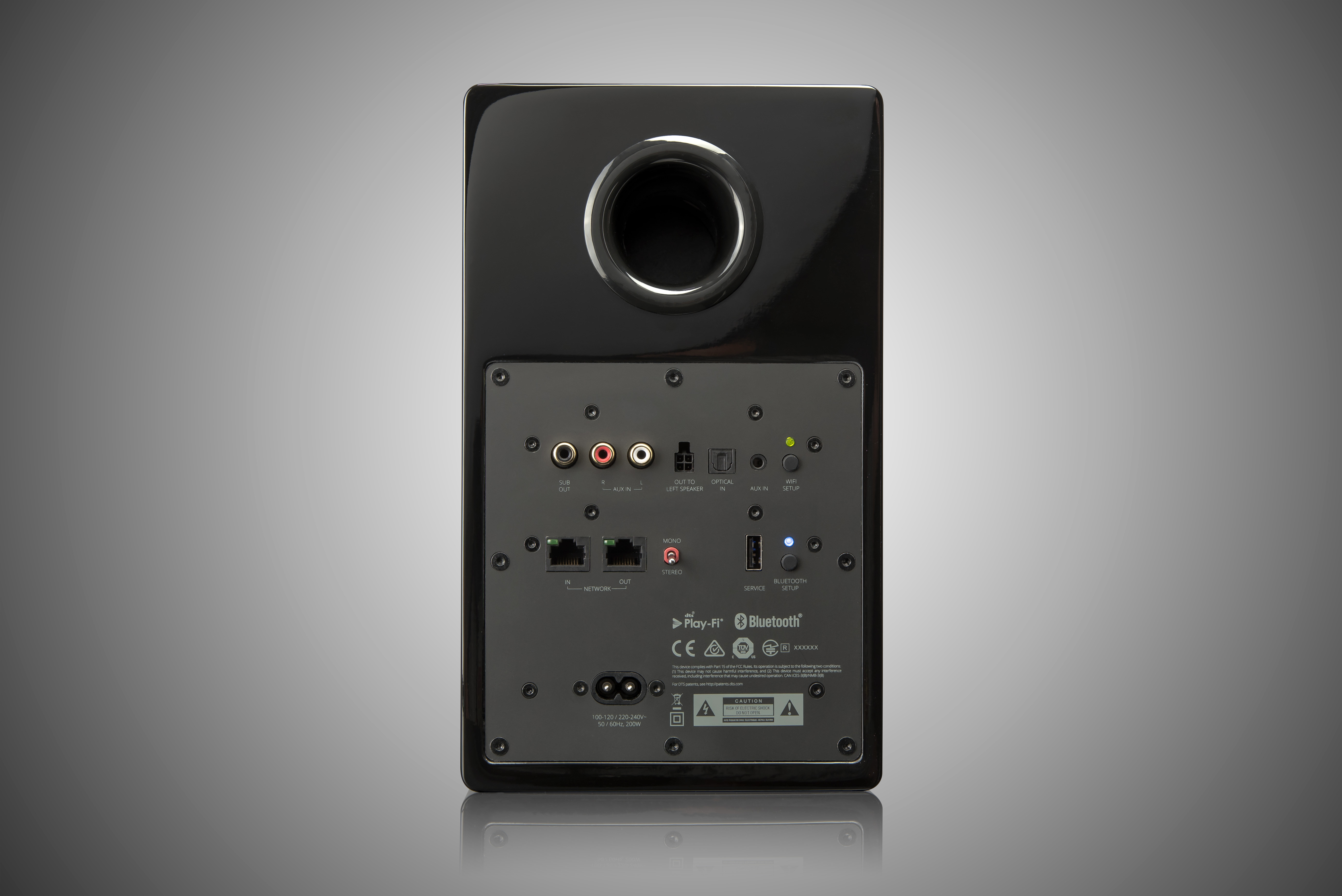
The right speaker has a connection for running speaker wiring to the passive left speaker, and a 10-foot cable is included. (SVS also sells a 15- and 20-foot version if needed.) Note, this cable is not CL-rated for running inside of walls. The right speaker also includes inputs for external audio connections (RCA and mini-jack analog and Toslink optical digital), and a single RCA output for connecting a subwoofer.
The right speaker’s front panel includes a couple of knobs and indicators. The right knob rotates to adjust volume and presses in to play/pause music, and I would have loved if there was some kind of visual indicator displaying current volume level. The left knob rotates to change the input between Bluetooth, Optical, and AUX (RCA), and depresses to cycle between the six different presets, which are one of my very favorite features of these speakers and something I believe is currently unique to SVS.
When something is playing, select the preset number on the speaker and then press and hold the preset button for a couple of seconds and it will save the entire playlist, channel, album, etc. you were listening to for fast recall. Even better, once a preset is saved, you don’t need to pull out a phone — or even have the phone present! — to recall it. Just bump the selector until your desired preset is displayed and then, within a few seconds, music starts. This is such a fast and great way to get music started, it almost guarantees you’ll listen to more music. Currently presets work for Spotify, Pandora, Internet Radio, Tidal, and iHeartRadio.
A wireless speaker would be a bit of an oxymoron if it didn’t offer WiFi, and the Prime handles both 2.4 and 5 GHz frequencies. There is also an RJ45 Ethernet in and out connection if the speaker can be hardwired. The speaker’s WiFi reception in my house was a little spotty; in a location where both my iPhone and laptop showed 80 percent signal about 30 feet from a high-power Luxul XAP-1510 WAP, the Prime Wireless registered just one bar and playback was choppy. I moved it far closer to the WAP and reception improved, but, even so, there were times when it would occasionally drop when playing 192 kHz/24-bit files.
There are also Bluetooth and WiFi setup buttons. (One minor irritation is that the Bluetooth light blinks constantly. #ProTip: If placing in a bedroom with a “light sensitive” sleeper, stick a piece of tape over it.) A single USB connection is labeled “Service,” but can also be used to charge a device or power an accessory such as SVS’ SoundPath Wireless Audio Adapter to transmit sub signals if running a cable isn’t possible.
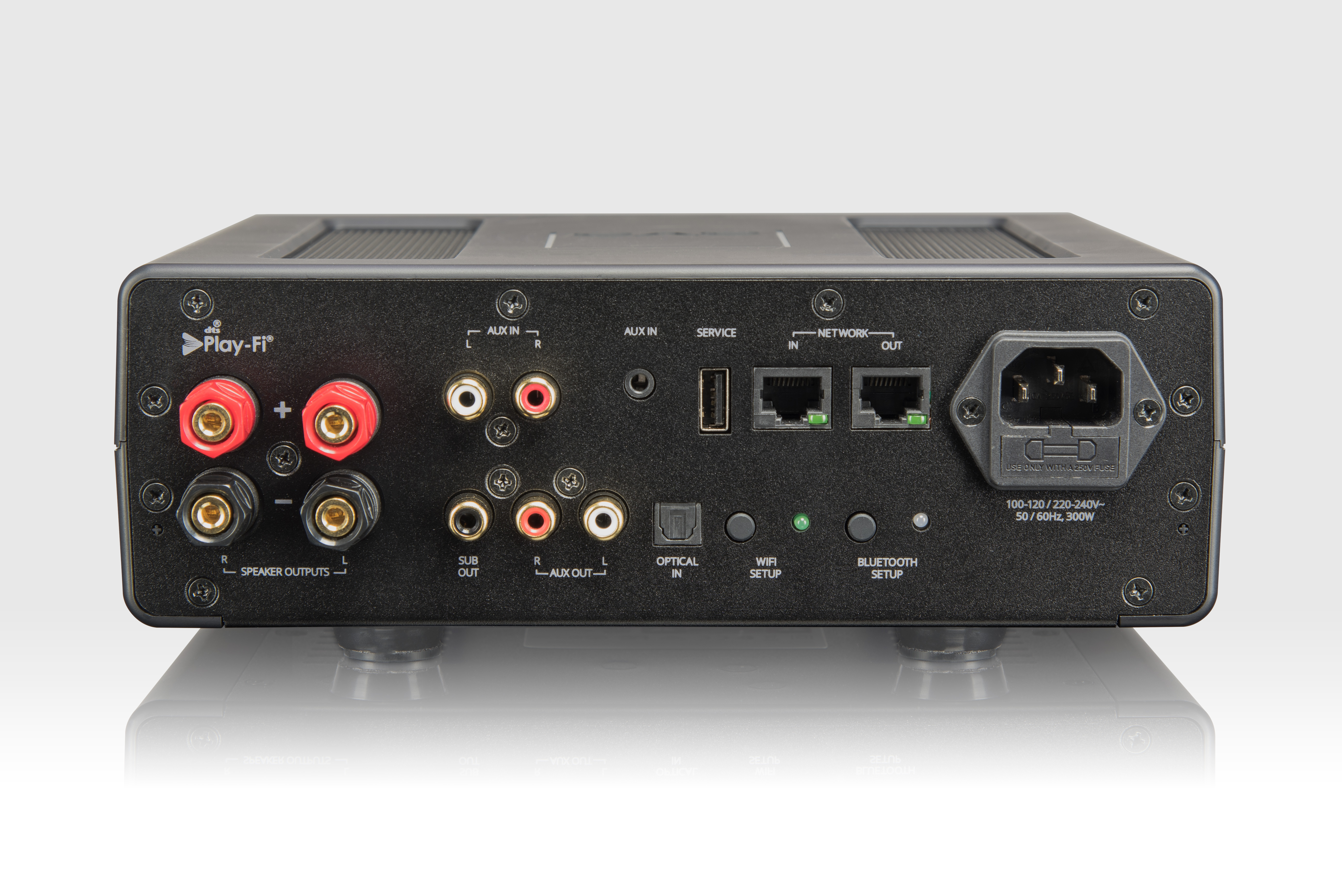
This is not my first Play-Fi rodeo, so I was familiar with the setup process, which is described nicely in the included manual. (Even better is the lengthy and thorough owner’s manual available at SVS’s website, providing a complete run-through of Play-Fi operation.) As a bit of background, I first reviewed Play-Fi back in late 2014 and at the time I wrote, “While I found the app — especially the iOS version — to be seriously wanting in several areas, it’s important to remember an app is just software; software that can be easily updated and improved. What you can’t improve on is bad sound or an inherently weak speaker design.”
Boy, how times have changed! Play-Fi has continued working on and improving the system, and each time I re-experience the system I’m always thrilled to find more features and improvements, and I think DTS has fully addressed all of my initial complaints. In fact, during my review, Play-Fi rolled out a new 5.0 release adding several more features! What you have now is an app and ecosystem that finally lives up to its initial potential. Play-Fi now supports far more streaming services, including all of the majors (save Apple Music). This includes Qobuz high-res streaming. Further, a Critical Listening Mode now lets you establish a one-to-one relationship with compatible speakers to enjoy true 24-bit/192 kHz high-resolution audio. And the Prime Wireless offers the only stereo execution of this mode, letting you enjoy the highest quality streaming possible.
Sonically, these speakers were an absolute treat to listen to, and I have to say they trounce any single speaker solution. The 10-foot cable provided enough separation to deliver terrific stereo performance and produce wonderful imaging and soundstage. The sound from this pair was enough to easily fill a room, and the tweeter is fast, open, and airy and delivers tons of spacious detail. Michael Hedges Aerial Boundaries is a personal favorite, and I gave it a full listen. The Prime Wireless did a wonderful job delivering the fast, transient string attacks in “Rickover’s Dream,” letting you clearly hear Hedges’s unique and dynamic playing style.
The speakers were equally adept handling female vocals. Lana Del Rey’s “Video Games” from Born to Die has a ton of spaciousness and reverb around the vocals, and these speakers let Del Rey’s voice just ooze and flow into the room with breathy warmth, creating an image with amazing width and height.
There is only so much low-end you can expect out of the 4.5-inch mid/bass driver, and the style of music you listen to — and the size of your room — will determine how much bottom-end you’re missing. The impressive thing about the Prime Wireless sound is that it was often a case of not truly realizing what you’re were missing until the sub is connected and those bottom octaves filled in. For example, with classic jazz like Miles and Coltrane, the music sounded great, but once the sub came in, those bass notes swelled and added depth and texture.
I love The Crystal Method’s “High Roller” from Vegas to test a speaker’s bass-handling mettle, and, while the 4.5-inch drivers gave it their all, it was clear those lowest octaves and deepest notes are just gone. Smartly, SVS made the subwoofer connection auto-sensing, and the speaker automatically puts in an 80 Hz low-pass filter when a sub is connected, letting you quickly demo the speakers with and without sub, and while the speakers sound good without the sub, they sound great with it.
Considering this is a complete, turnkey, high-performance stereo audio experience in a tiny footprint for under $1100, it makes an easy recommendation. The auto-sensing sub connection makes for a quick and compelling demo, and I doubt many people would opt-out of buying the sub once they hear the expansion of those lowest octaves.
Want more stories like this delivered to your inbox every day? Then sign up for the free Residential Systems eNewsletter here.
————————————————————–
877-626-5623 / SVSOUND.COM
Product Specs:
- DTS Play-Fi app (iOS and Android) supports Amazon Music, Deezer, iHeartRadio, Internet Radio, KKBOX (Asian markets only), Napster, Pandora, Quboz, SiriusXM, SoundMachine, Spotify (Connect), and Tidal; Bluetooth aptX
- DLNA media server streams MP3, M4A, AAC, WAV, and FLAC up to 192/24 (in critical listening mode)
- Dual-band 2.4 and 5.0 GHz 802.11g/n WiFi; Ethernet LAN connection
- 1-inch aluminum dome tweeter and 4.5-inch polypropylene mid-bass driver; rated 52 Hz–25 kHz (±3 dB)
- Powered speaker features 4×50-watt Class D amplification to discretely amplify all drivers in both speakers
- Six custom presets allow quick access to favorite playlists without needing a phone/tablet
- Connections (Powered Speaker): Inputs: RCA stereo analog audio, 3.5mm analog audio, Toslink optical, RJ45 Ethernet, USB (service and device power) Outputs: RJ45 Ethernet, RCA subwoofer, 4-pin connection to passive speaker, Power
Dimensions: 10.24 x 6.1 x 7.21-inches (HxWxD); Weight: 9.55/8.73-pounds (active/passive speaker)
